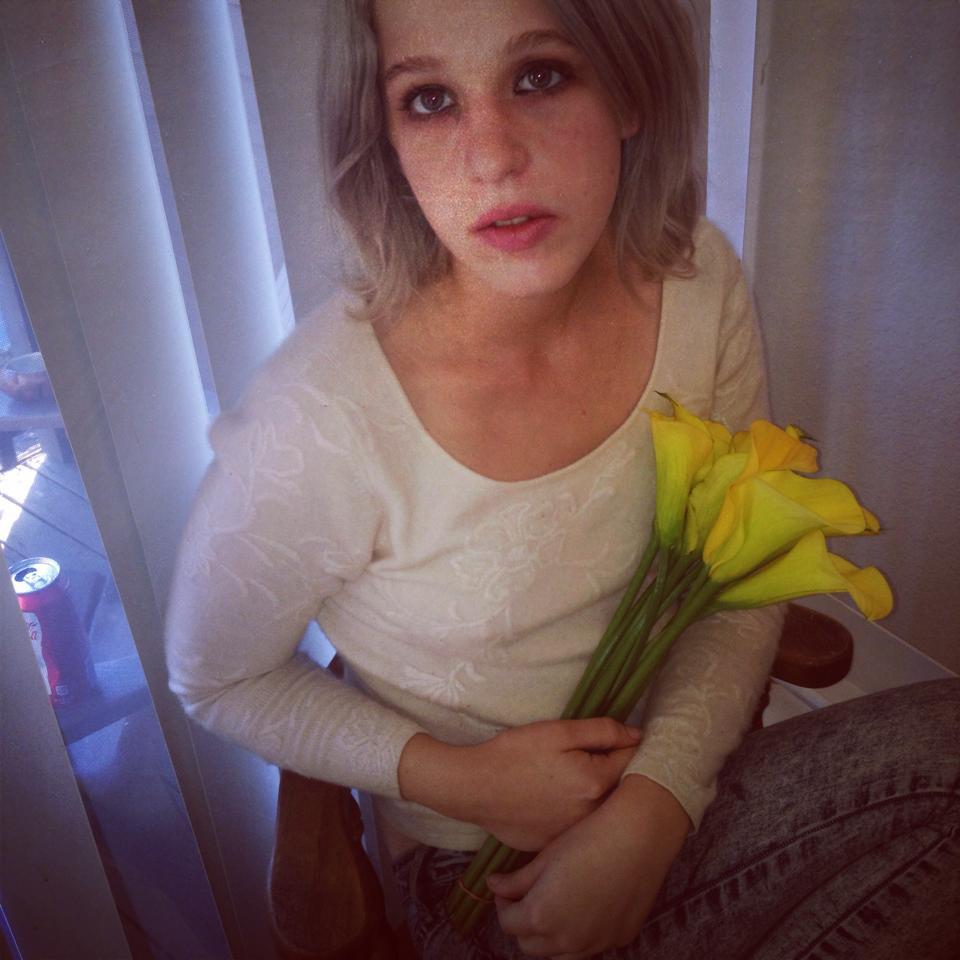Louise Bourgeois at Couvent d’o Bonnieux, 2002
Tag: interiors

Dorothea Tanning

DAMIEN HIRST
Love Lost, 2000
Aquatic tank and filtration unit, 1 couch, 1 table, 1 stool, surgical instruments, 1 computer, ring, cup, watch and fish
108 x 84 x 84 inches (274.3 x 213.4 x 213.4 cm)

Tracey Emin, The Last Thing I Said to You was Don’t Leave Me Here II, 2000
This photograph, which was published in an edition of six, is a self-portrait of the artist sitting naked on the floor in the corner of a beach hut. Her back is to the camera and she leans slightly forward. A small tattoo of a scorpion is visible on her left shoulder blade. Thick gold necklaces glint at the nape of her neck. Her pose recalls the vulnerable, dejected figure of a punished child. Paint is peeling from the walls of the empty hut, giving it a ramshackle appearance which heightens the mood of pathos.
Emin bought the beach hut in Whitstable, Kent with her friend, the artist Sarah Lucas (born 1962), in 1992. Emin used the hut as a weekend retreat, going there with her boyfriend. She has talked about the importance of owning property for the first time, saying, ‘I was completely broke and it was really brilliant, having your own property by the sea’ (quoted in Lobel). In 1999, she transported the hut from the beachfront to the gallery, titling it The Last Thing I Said to You is Don’t Leave Me Here (The Hut), 1999 (Saatchi Gallery, London).
The Hut was exhibited for the first time in London in Ant Noises (part two) at the Saatchi Gallery in 2000. (The show’s title was an anagram of Sensation, the 1997 exhibition of work by young British artists in the Saatchi Collection at the Royal Academy, London.) The installation was accompanied by two photographs including the work now owned by Tate. The companion image, The Last Thing I Said to You was Don’t Leave Me Here I, 2000 (National Portrait Gallery, London), shows the artist kneeling on the floor of the hut. She is seen from the side as she leans forward placing her right hand on her knee. Her eyes are closed. Emin has described why she chose to photograph herself naked, saying, ‘The hut is a bare and naked thing. I thought it made perfect sense if I was. It’s also got some kind of weird, religious look in it, like I’m praying or something’ (quoted in Lobel). There is a meditative quality to Emin’s postures in the photographs, and her nudity suggests that she is enacting a private ritual of purification or sacrifice.
In the Tate work the space is particularly confined. The angle of the camera looking down on the figure huddled in the corner puts the viewer in a position of authority. The title suggests that the image documents the aftermath of a lovers’ quarrel, with the woman abandoned in an inhospitable environment. Emin’s work is highly confessional. The Last Thing I Said to You was Don’t Leave Me Here II invites an autobiographical narrative reading but because, unlike in many of her text-based works (see Tracey Emin C.V., 1995, Tate T07632), the story is hinted at rather than spelt out, the viewer is left to draw his or her own conclusions about what may have happened in the hut. The photograph looks like both the staged reconstruction of an incident from the artist’s past and her attempt to derive some peace from a distressing memory. The image invites the viewer to empathise with the artist and to respect the emotional honesty with which she documents and shares her pain.

In the 1990s, while in her eighties, Louise Bourgeois devoted herself to the creation of these magical chambers, the Cells, in which she gathers objects that are dear to her and which are invested with a strong emotional charge. The Cells are places where she unravels the fabric of her memories and her emotions.
Precious liquids is an imposing cylindrical installation into which the spectator is invited to enter. It is a dark enclosed space, composed of a cylindrical cedar water tank, such as can be seen on the rooftops of New York, and designed for collecting “precious liquids”.
The liquids are those that the human body produces when subjected to emotions such as fear, joy, pleasure, suffering. Blood, milk, sperm and tears are thus the precious liquids that the artist orchestrates in this space.
At the centre of the strange barrel is an old iron bed surrounded by posts supporting glass spheres, whose function is to decant, via the pipes that connect them to the puddle of water in the middle of the bed, the liquid that rises when it evaporates and falls back down again when it condenses.
absalon, ‘solutions’ 1992; video (7:30 min), color, sound
“In the course of six years Absalon created a series of one person living units based on everyday routine actions and designed entirely in relation to his measures. The inside of the cell is all covered in white in order to reduce distractions or elements that can disturb the eye. In his video Solutions (1992) Absalon demonstrate the study of measurements and calculation of movements like eating, sleeping, taking shower which later will define the form of his cells. In 1993 Absalon started to construct six cells which were supposed to be installed in six metropolitan centers[6] as Absalon described in interview: “I would like to create my own setting and belong to nothing else. My living unit will be comprised of the six habitation units which I construct, and my homeland will be in-between them.” [7]“
—Wikipedia
Louise Bourgeois Church
1998






